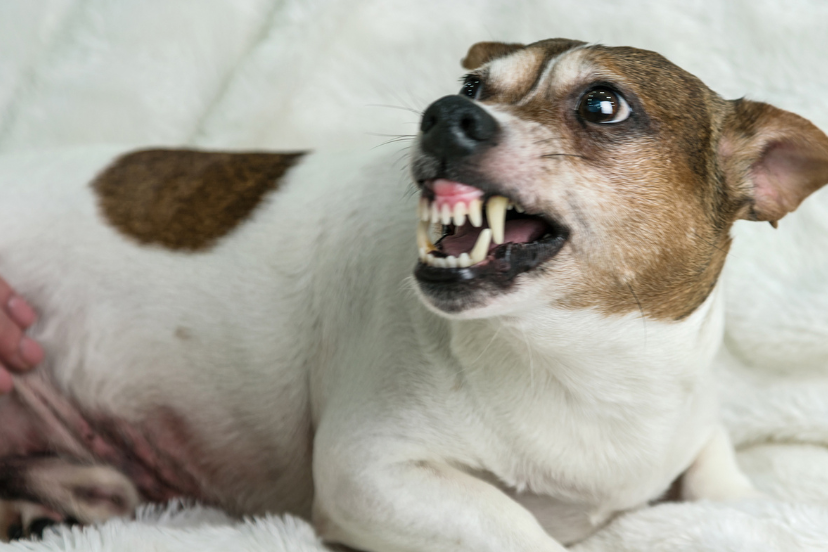Signs of Aggression in Dogs: Unveiling the Canine Code
Picture this: you’re enjoying a leisurely stroll with your four-legged companion on a sunny afternoon. Everything seems perfect until suddenly, your dog’s ears prick up, its fur bristles, and a low growl rumbles from its throat. What’s going on? Is your beloved pet displaying signs of aggression? Don’t fret! In this comprehensive guide, we’re diving deep into the enigmatic world of canine behavior. Get ready to decode those puzzling growls and unruly behaviors, and uncover the signs of aggression in dogs that every pet owner should know.
Signs of Aggression in Dogs
Aggression is a natural behavior in dogs, stemming from their primal instincts. However, it’s essential to differentiate between playful antics and genuine aggression. Here are the key signs that might indicate your dog is feeling a little more ferocious than friendly:
- Growling with a Side of Snapping: One of the telltale signs of aggression is growling, often accompanied by snapping motions. When your dog growls and bares its teeth, it’s a clear indicator of its discomfort or unease.
- Stiff Body Language: If your furry friend’s body suddenly tenses up, with rigid muscles and a stiff posture, it might be on the verge of an aggressive outburst.
- Direct Eye Contact: Just as in human culture, eye contact in the dog world can carry intense messages. If your dog maintains unwavering eye contact with a fixed stare, it could be a warning sign of aggression.
- Barking with Intensity: While barking is a typical form of communication, aggressive barking is distinct. It’s louder, sharper, and often accompanied by a defensive stance.
- Hair-raising Experience: The famous “hackles” – the hair on a dog’s back – can stand on end when it’s agitated. This is an instinctive reaction that makes your dog appear larger and more intimidating.
- Snarling and Lip Curling: A snarl, along with the curling of the lips to expose teeth, is a clear indicator that your dog is feeling threatened or aggressive.
- Biting – the Ultimate Warning: When all else fails, biting might be the final resort for a dog feeling cornered or provoked.
FAQs about Signs of Aggression in Dogs
Q1: Are All Dogs Equally Prone to Aggression?
A1: No, aggression levels can vary widely between dog breeds and individual personalities. While some breeds might have a higher predisposition to aggression due to their history and genetics, any dog can exhibit aggressive behaviors based on its upbringing and experiences.
Q2: Can Fear Lead to Aggression?
A2: Absolutely. Fear is a common trigger for aggression in dogs. If they perceive a threat or feel cornered, their natural response can escalate into aggressive behavior.
Q3: How Can I Prevent Aggression in My Dog?
A3: Socialization is key. Expose your dog to various environments, people, and animals from a young age. Proper training, positive reinforcement, and a loving environment go a long way in preventing aggression.
Q4: Should I Punish a Dog for Aggressive Behavior?
A4: No. Punishment can exacerbate aggression and lead to more negative behavior. Instead, consult a professional dog trainer or behaviorist to address the root cause of the aggression.
Q5: Is Growling Always a Sign of Aggression?
A5: Not necessarily. Dogs also growl during play and exploration. Context matters. If the growling is accompanied by tense body language, it’s more likely to be aggression.
Q6: Can Neutering/Spaying Reduce Aggression?
A6: Neutering or spaying might help reduce certain types of aggression, particularly those driven by hormonal changes. However, it’s not a guaranteed solution and should be discussed with a veterinarian.
Navigating Aggression: A Step Towards Harmony
Understanding and addressing aggression in dogs is a vital step towards maintaining a harmonious and safe environment for both your furry friend and those around it. Here are some actionable steps to consider:
- Identify Triggers: Observe your dog’s behavior closely and note down what seems to trigger its aggressive reactions. Is it a particular person, object, or situation?
- Seek Professional Help: If your dog’s aggression becomes a persistent issue, consult a veterinarian or a certified dog behaviorist. They can provide expert guidance tailored to your dog’s specific needs.
- Positive Reinforcement: Reward your dog’s good behavior with treats, affection, and verbal praise. Positive reinforcement can go a long way in reshaping negative behaviors.
- Avoid Provoking Situations: If you know your dog reacts aggressively in certain situations, try to avoid exposing it to those triggers whenever possible.
- Consistent Training: Enroll your dog in obedience training classes to reinforce basic commands and proper behavior. Consistency is key to curbing aggression.
Conclusion: A Well-Balanced Approach
In the complex world of canine behavior, deciphering the signs of aggression is a crucial skill for any dog owner. By recognizing the warning signals and taking proactive steps, you can create a positive atmosphere that promotes a well-balanced and joyful relationship with your furry companion. Remember, every dog is unique, so patience, understanding, and a dash of training can go a long way in ensuring
both your and your dog’s happiness. So, the next time your dog exhibits signs of aggression, you’ll be well-equipped to respond with empathy and effectiveness.




